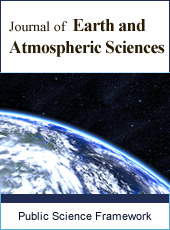Journal of Earth and Atmospheric Sciences
Articles Information
Journal of Earth and Atmospheric Sciences, Vol.1, No.1, Sep. 2016, Pub. Date: Jul. 27, 2016
Analysis of the Sea Level Rate of Rise in the Solomon Islands
Pages: 30-35 Views: 4446 Downloads: 976
[01]
A. Parker, School of Engineering and Physical Science, James Cook University, Townsville QLD 4811, Australia.
The sea levels are rising in the Solomon Islands because of the increasing volume of the ocean waters and because of the sinking of the land. It is shown as a proper analysis of the actual measurements at the tide gauges suggests the most likely sea level rise is less than the +2.8 mm yr-1 computed over a still too short time window of 41 years not fully clearing the long term trend of the multi-decadal variability.
Tide Gauges, Time Series, Solomon Islands
[01]
A. Parker (2013), MINIMUM 60 YEARS OF RECORDING ARE NEEDED TO COMPUTE THE SEA LEVEL RATE OF RISE IN THE WESTERN SOUTH PACIFIC, Nonlinear Engineering. 3(1): 1-10.
[02]
M. Becker, B. Meyssignac, C. Letetrel, W. Llovel, A. Cazenave, T. Delcroix (2012), Sea level variations at tropical Pacific islands since 1950, Global and Planetary Change, 80–81: 85-98.
[03]
S. Albert, J. X. Leon, A. R. Grinham, J. A. Church, B. R. Gibbes and C. D. Woodroffe (2016), Interactions between sea-level rise and wave exposure on reef island dynamics in the Solomon Islands, Environmental Research Letters 11:054011.
[04]
http://www.bom.gov.au/oceanography/projects/spslcmp/reports_6mths.shtml
[05]
http://www.abc.net.au/news/2016-05-07/rising-sea-levels-blamed-for-wiping-out-five-islands/7392986
[06]
http://phys.org/news/2016-05-sea-level-islands-solomons.html
[07]
A. Parker (2013), Oscillations of sea-level rise along the Atlantic coast of North America north of Cape Hatteras, Natural Hazards 65(1): 991-997.
[08]
A. Parker (2013), SEA-LEVEL TRENDS AT LOCATIONS OF THE UNITED STATES WITH MORE THAN 100 YEARS OF RECORDING, Natural Hazards 65(1): 1011-1021.
[09]
A. Parker, M. Saad Saleem & M. Lawson (2013), Sea-Level Trend Analysis for Coastal Management, Ocean & Coastal Management 73: 63–81.
[10]
A. Parker (2013), MINIMUM 60 YEARS OF RECORDING ARE NEEDED TO COMPUTE THE SEA LEVEL RATE OF RISE IN THE WESTERN SOUTH PACIFIC, Nonlinear Engineering. 3(1): 1-10.
[11]
A. Parker & C. D. Ollier (2016), COASTAL PLANNING SHOULD BE BASED ON PROVEN SEA-LEVEL DATA, Ocean and Coastal Management. Doi: 10.1016/j.ocecoaman.2016.02.005.
[12]
http://www.psmsl.org/data/obtaining/stations/1373.php
[13]
http://www.psmsl.org/data/obtaining/stations/1861.php
[14]
http://www.bom.gov.au/pacific/projects/pslm/
[15]
http://www.bom.gov.au/ntc/IDO70061/IDO70061SLD.shtml
[16]
http://www.psmsl.org/data/obtaining/rlr.monthly.data/513.rlrdata
[17]
Chambers, D. P., Merrifield, M. A., & Nerem, R. S. (2012). Is there a 60-year oscillation in global mean sea level?. Geophysical Research Letters, 39(18).
[18]
Scafetta, N. (2014). Multi-scale dynamical analysis (MSDA) of sea level records versus PDO, AMO, and NAO indexes. Climate dynamics, 43(1-2), 175-192.

ISSN Print: Pending
ISSN Online: Pending
Current Issue:
Vol. 2, Issue 4, July Submit a Manuscript Join Editorial Board Join Reviewer Team
ISSN Online: Pending
Current Issue:
Vol. 2, Issue 4, July Submit a Manuscript Join Editorial Board Join Reviewer Team
| About This Journal |
| All Issues |
| Open Access |
| Indexing |
| Payment Information |
| Author Guidelines |
| Review Process |
| Publication Ethics |
| Editorial Board |
| Peer Reviewers |


